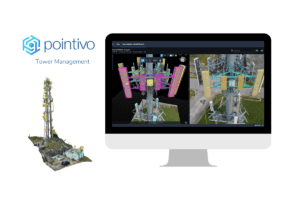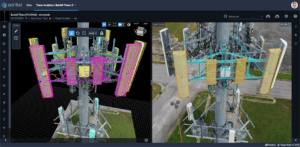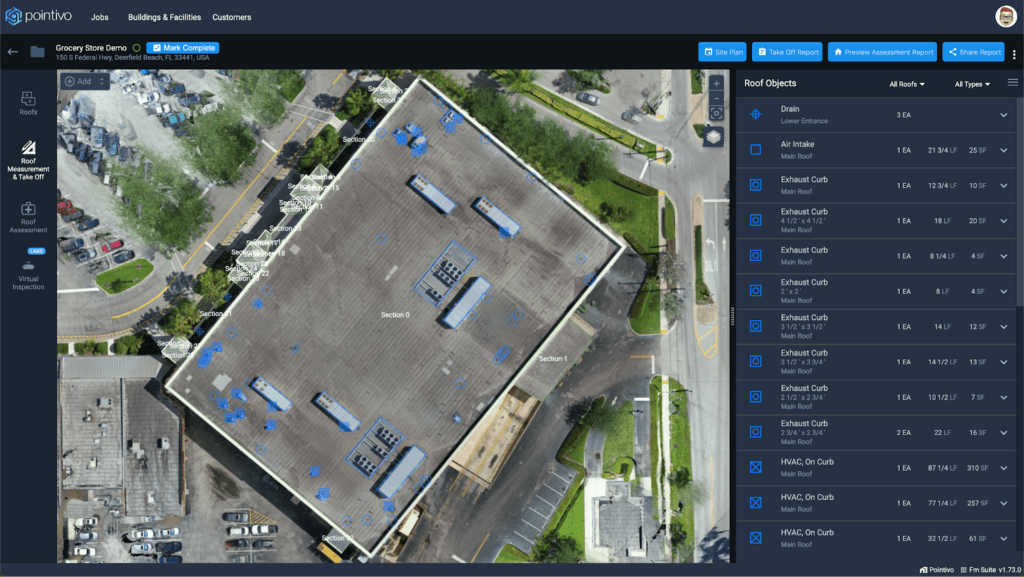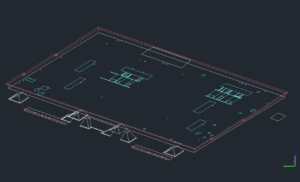 You may never have heard the Pointivo name – but for a wide variety of industries, the product is mission critical. Like the “Intel Inside” refrain of the 1990’s, Pointivo is the white-labeled software inside the platforms of oil and gas companies, the largest and most scaled TowerCo digital inspection project, and one of the biggest residential solar installers in the US. Now, Pointivo is reaching out directly to customers to help solve their most pressing problems by providing visually understood, data-rich 3D models of physical structures.
You may never have heard the Pointivo name – but for a wide variety of industries, the product is mission critical. Like the “Intel Inside” refrain of the 1990’s, Pointivo is the white-labeled software inside the platforms of oil and gas companies, the largest and most scaled TowerCo digital inspection project, and one of the biggest residential solar installers in the US. Now, Pointivo is reaching out directly to customers to help solve their most pressing problems by providing visually understood, data-rich 3D models of physical structures.
Continue reading below, or listen:
“We power an industry,” says Pointivo CTO Jacob Garland. “We’re an AI-driven software platform that uses computer vision and machine learning to derive structural data.”
 More than a Digital Model
More than a Digital Model
Pointivo transforms imagery of physical structures into visually understood 3D digital models. Not simply digital twins, Pointivo’s models are designed to deliver immediate business value. “For us, when we think of a digital twin, we think of a digital representation that may include much more information than just a point cloud or a mesh model,” says Pointivo CTO Jacob Garland. “We can integrate our model with backend systems that add the information that’s important about that asset.”
For companies whose business involves the management of many geographically diverse physical structures – businesses like facilities management, commercial solar roofing, telecom, or oil and gas – data-rich digital models represent a leap forward from asset management systems that often rely upon spreadsheets and image attachments. Digital models integrated into business intelligence systems solve real problems, keeping workers off of roofs and towers and offering critical business input. “How do I get an objective view of the condition of a chain of 4,000 properties, and reconcile that without spreadsheets?” Garland asks. “That’s where the ROI is.”

3D models and digitial twins are frequently used terms, but the products are not all the same. Pointivo was founded in 2014, based on research focused on forming structural data from unstructured data. “Our product is visually oriented – we have patents around our ability to take a 3D model and allow people to really visualize that in a seamless way. You can be hundreds of miles away and be dropped virtually onto that structure and see what’s going on,” says Garland.
Meeting the Customer Where they Are
Adopting a new technology program – especially one that may involve new data sources, like drones – can be challenging for large companies. Pointivo doesn’t let adoption hurdles hold their customers back. Colin Blake is the company’s Director of Solutions Engineering.
“We approach the problem from a customer perspective,” he says. “When customers first meet us, we’ll take the asset address and deliver a .pdf of all of the information they require. But once we’ve demonstrated the value and can show the ROI of what we do, we’re able to work with them to implement the software and get more benefit.”
The Pointivo platform is designed to be flexible, offering the appropriate data for the customer’s needs. Drone data has driven 3D modeling technology forward, but Pointivo is not tied to drones. “We’re agnostic from a data source perspective,” Blake explains. “We’re not locked into a manufacturer or a sensor. We’ll take data that helps solve a customer problem from any source.”
The platform can deliver the appropriate level of precision for the problem. The company has developed a patented scale marker system that can be utilized to obtain engineering grade accuracy, and they can create CAD drawings, identify locations, and more when necessary.
“Our overarching goal is for technology to fade into the background,” adds Garland.
 New Customers, and New Solution Sets
New Customers, and New Solution Sets
As a white label solutions provider, Pointivo’s partner network is expanding, and the company is happy to continue powering systems for global enterprises. Now, however, they’re also offering solutions directly to the client.
“Being able to provide a solution directly to the customer need is satisfying,” says Garland. “It gives us the opportunity to explore new use cases ready for this type of solution.
“We see so many people not get the capacity they need – and we know we can solve these customer problems. We have years of experience in solving real world problems: we don’t believe in software for software’s sake.”
“We have a large set of building blocks we’ve developed– we want to talk to our customers and put those pieces together to build the perfect solution to solve their problems,” says Blake.
Read more:
Miriam McNabb is the Editor-in-Chief of DRONELIFE and CEO of JobForDrones, a professional drone services marketplace, and a fascinated observer of the emerging drone industry and the regulatory environment for drones. Miriam has penned over 3,000 articles focused on the commercial drone space and is an international speaker and recognized figure in the industry. Miriam has a degree from the University of Chicago and over 20 years of experience in high tech sales and marketing for new technologies.
For drone industry consulting or writing, Email Miriam.
TWITTER:@spaldingbarker
Subscribe to DroneLife here.
https://dronelife.com/2023/05/16/visual-3d-models-of-real-world-structures-pointivo-powers-an-industry/
 Unmanned Aerial Vehicle The latest drone news
Unmanned Aerial Vehicle The latest drone news



